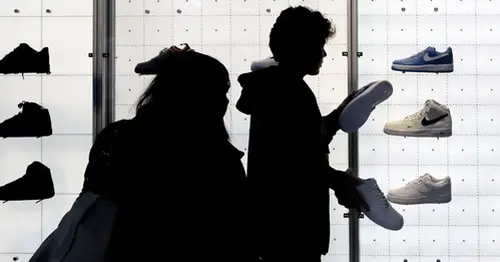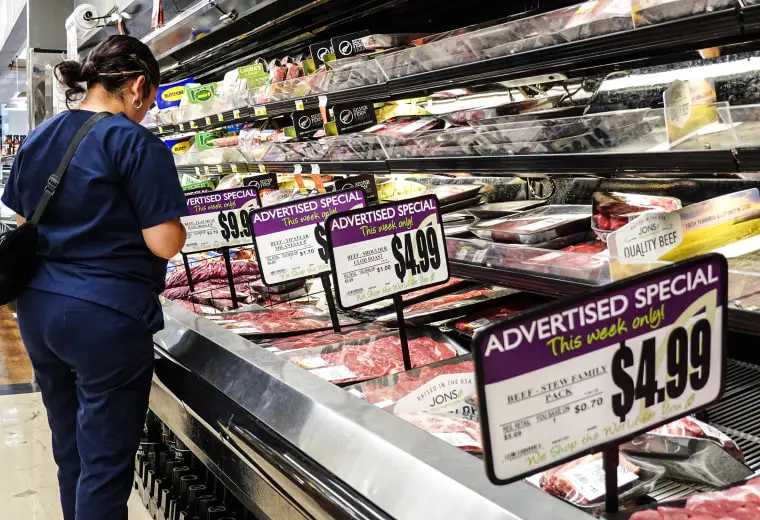
Are we in a recession? Is one coming? Here's what economists say.
Here's the good news about the U.S. economy right now: Despite a wave of high-profile layoff announcements, most workers are still employed. Last week, the Bureau of Labor Statistics reported that the number of people filing for unemployment benefits fell to a nine-month low of 186,000. The unemployment rate remains at 3.5%, the lowest in a half-century. And there are about 10.5 million job openings.
Yet many economists believe we are heading for some type of economic recession. It just might not look like the recessions we've previously experienced in the U.S.
"I think the characteristics of this recession are likely to be different than prior ones," said Gregory Daco, the chief economist at Ernst and Young's EY-Parthenon consulting group. He cited two reasons: the state of household finances, like healthy savings rates and relatively low levels of debt, and demand for labor, which continues to be resilient.
"So we have not seen the type of severe pullback we usually see at the onset of a recession, where businesses look to cut costs rapidly," he said. "So the pullback is likely to be softer and more gradual than in the past. We're not going to see broad-based layoffs."
Why, then, could the U.S. still be marching toward a recession? Daco said consumer spending levels appear to have peaked several months ago. In addition, people have begun working fewer hours, and manufacturing activity has begun to pull back.
"So across the economy there are more indications that the economy is slowing down materially, and that’s typically the sign of the onset of a recession," Daco said.
The news of a slowdown is, at least so far, being met with some relief among some observers. That's because it's an indication that an economic "soft landing," in which the breakneck rate of inflation for much of last year appears to be getting extinguished without a rapid and expansive rise in unemployment.
Federal Reserve officials have made it very clear that that is part of their objective to pull back on inflation, which reached as high as 9% on an annualized basis last summer. For nearly a year, the central bank has leaned into an aggressive campaign to raise interest rates to slow the rise of consumer prices.
Fed Chair Jerome Powell himself was unabashed last year about taking those measures.
"I just think that the inflation picture has become more and more challenging over the course of this year, without question," Powell said at his monthly news conference in November. "That means that we have to have policy be more restrictive, and that narrows the path to a soft landing."
What's it going to take?

Michael Antonelli, a managing director and private wealth manager at the financial services company Baird, said that to get a soft landing, inflation would have to fall significantly, corporate earnings would have to hold up, and the job market would have to stay strong.
The odds of sticking that “landing” are going to be tough — but not impossible — Antonelli said.
"A soft landing is a long shot by any probability — it's never really happened before," he said. "Any time inflation has been this high, we have a recession to bring it under control. There aren't a lot of historical analogies for a soft-landing scenario."
Many economists agree that the U.S. is, for now, not in a recession. The most recent gross domestic product report published last week showed the U.S. economy grew by 2.9% in the fourth quarter of 2022, following growth of 3.2% in the quarter before. That's more than enough to overcome one technical definition that a recession equals two consecutive quarters of negative growth.
But the same economists still foresee a "mild" recession's hitting soon.
“The mix of growth was discouraging, and the monthly data suggest the economy lost momentum as the fourth quarter went on,” Andrew Hunter, a senior U.S. economist for Capital Economics, wrote of the latest GDP report. “We still expect the lagged impact of the surge in interest rates to push the economy into a mild recession in the first half of this year.”
In fact, the economy may now be in a sweet spot. Julia Pollak, the chief economist at the online employment marketplace ZipRecruiter, sees encouraging signs that the economy is in, or is heading toward, a point where inflation is coming down quickly "without a huge economic cost," like higher unemployment.
"We may now be on the cusp of a situation where wage growth is going to be faster than inflation for the foreseeable future and consumers get real wage increases after two years of real wage declines," she said.
Ironically, it may end up being the Federal Reserve itself that pushes the economy into recessionary territory, Pollak said. On Wednesday, the Fed will announce its latest interest rate decision. If it raises rates by another half-point, as it did in December, it will signal to markets that it remains concerned about inflation — even as investors elsewhere have indicated they remain satisfied with the current pace of slower price growth.
"The big risk is that the Fed may not recognize [a price-growth slowdown] soon enough or that it's too worried and be too aggressive and overshoot," Pollak said.
If rates go higher than markets anticipate, she said, "that will cause some degree of panic and consternation and could slow down major expenditures and investments enough to cause more pain in the labor market."






